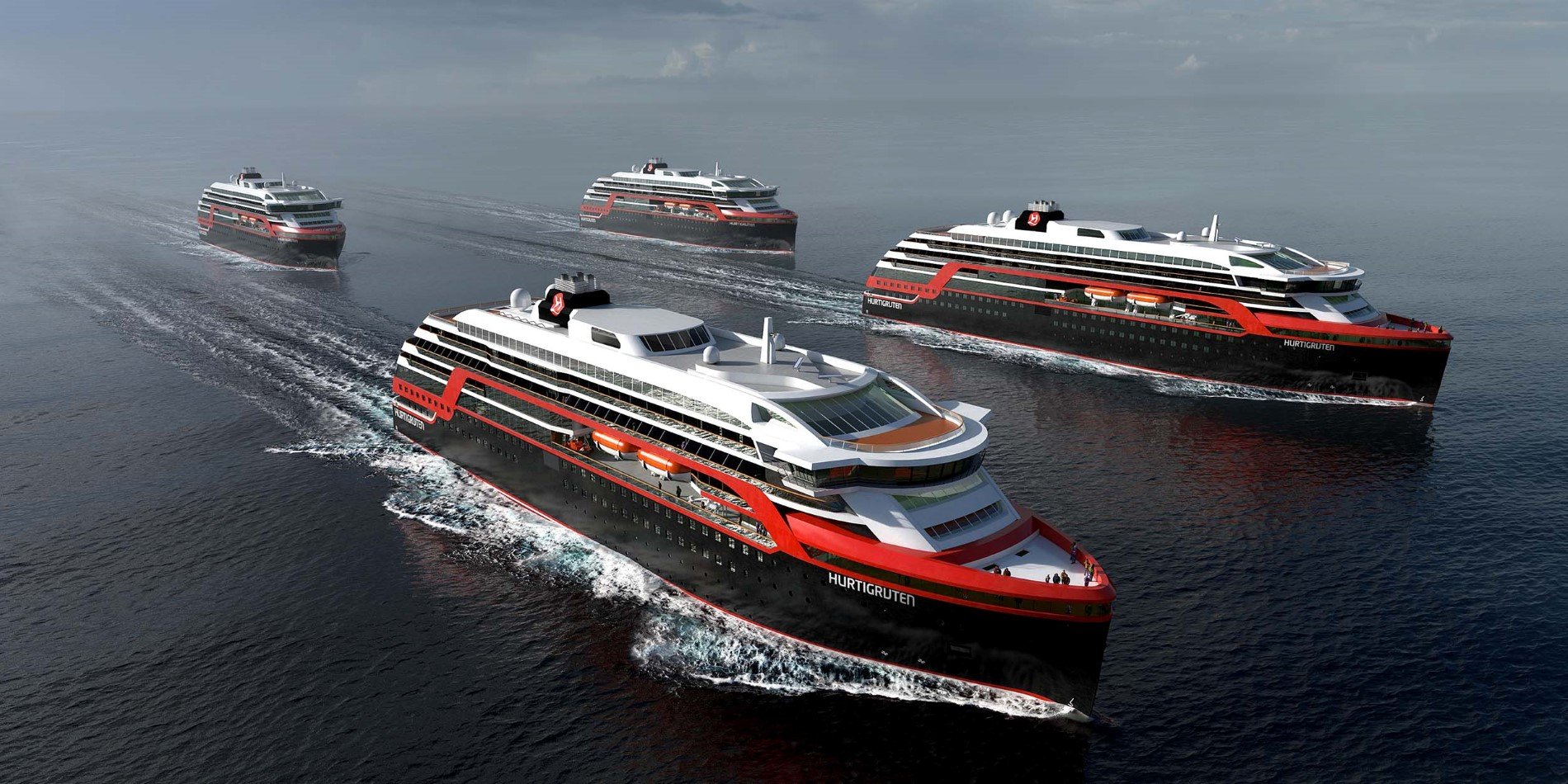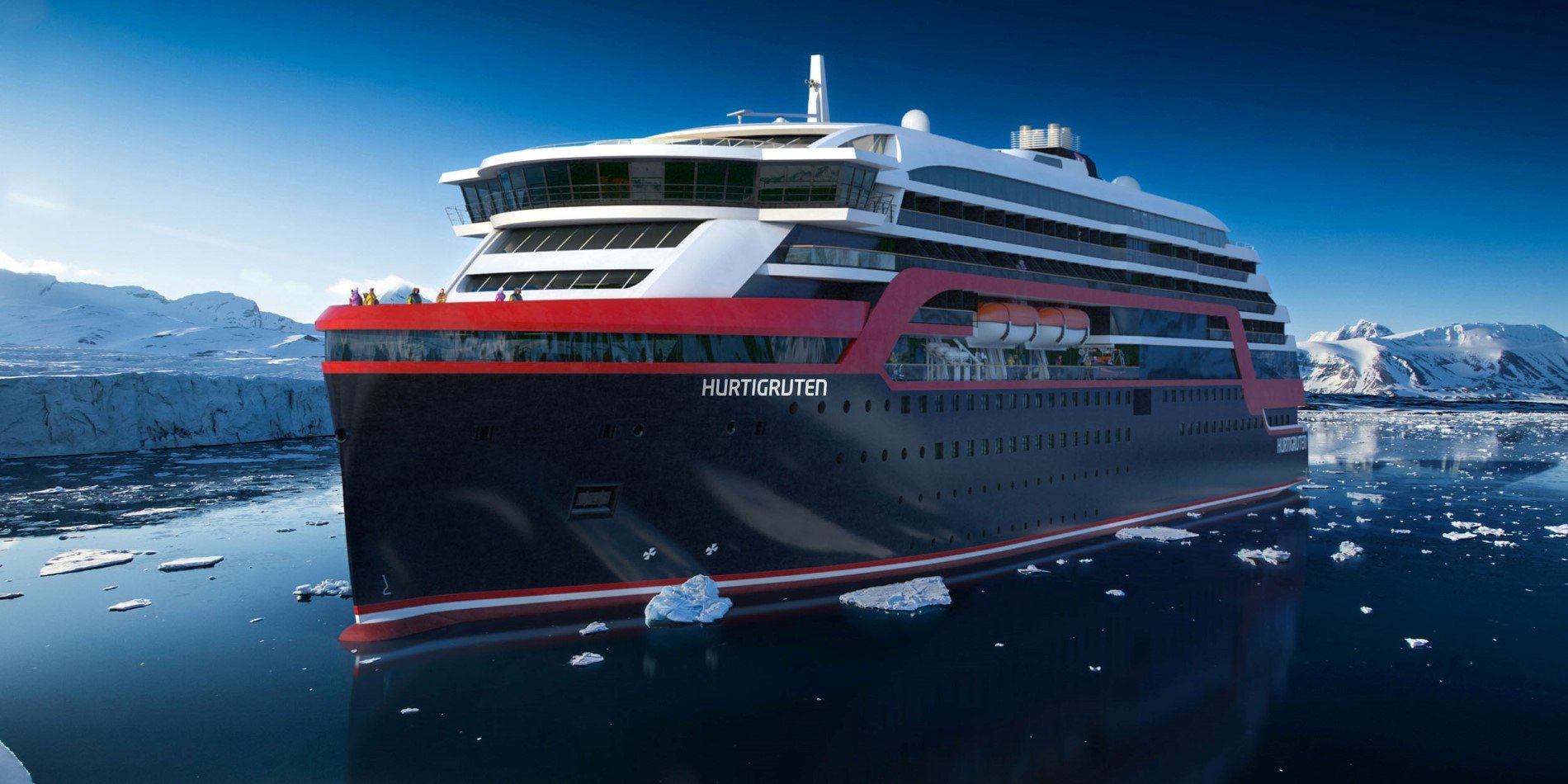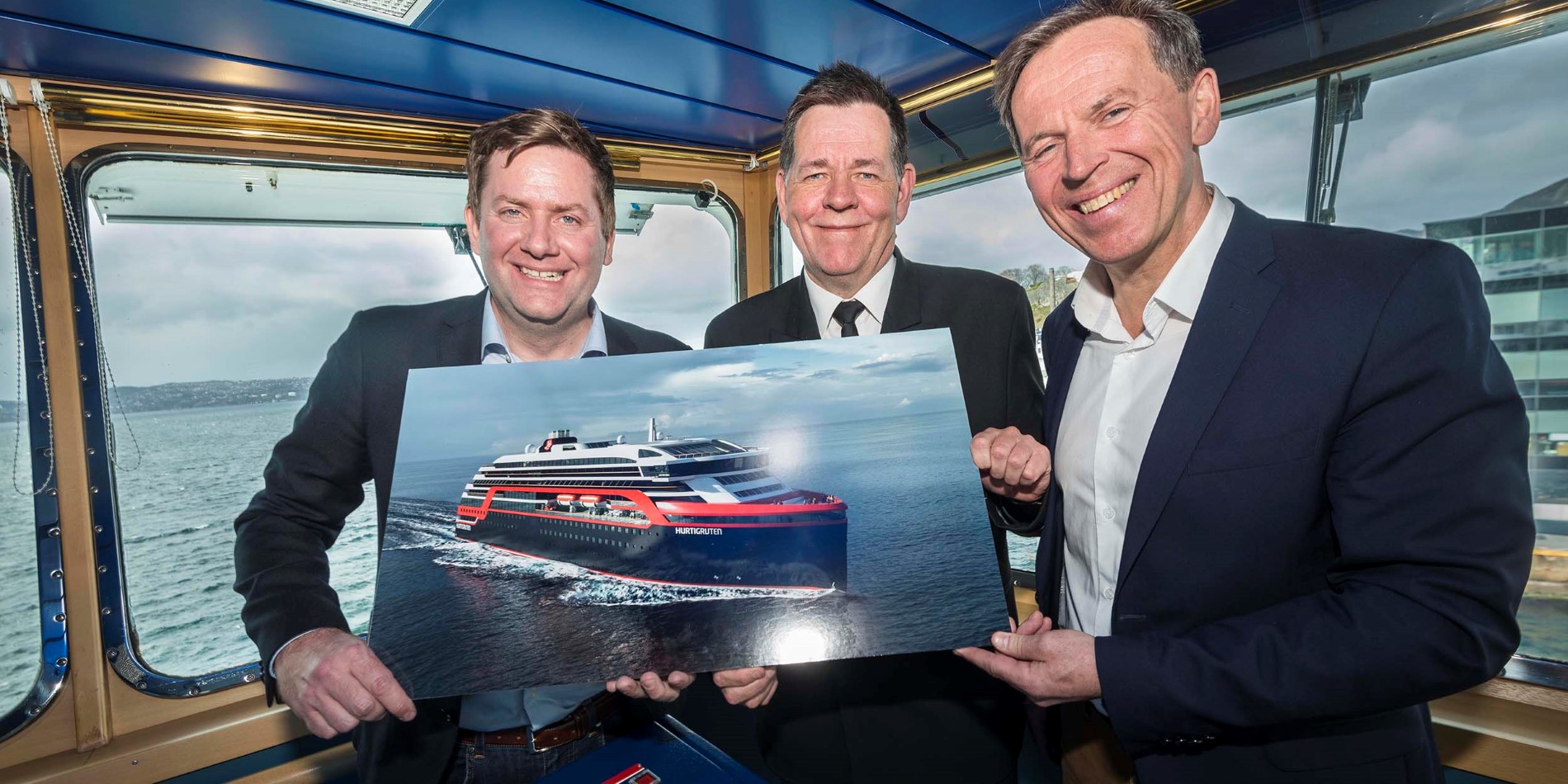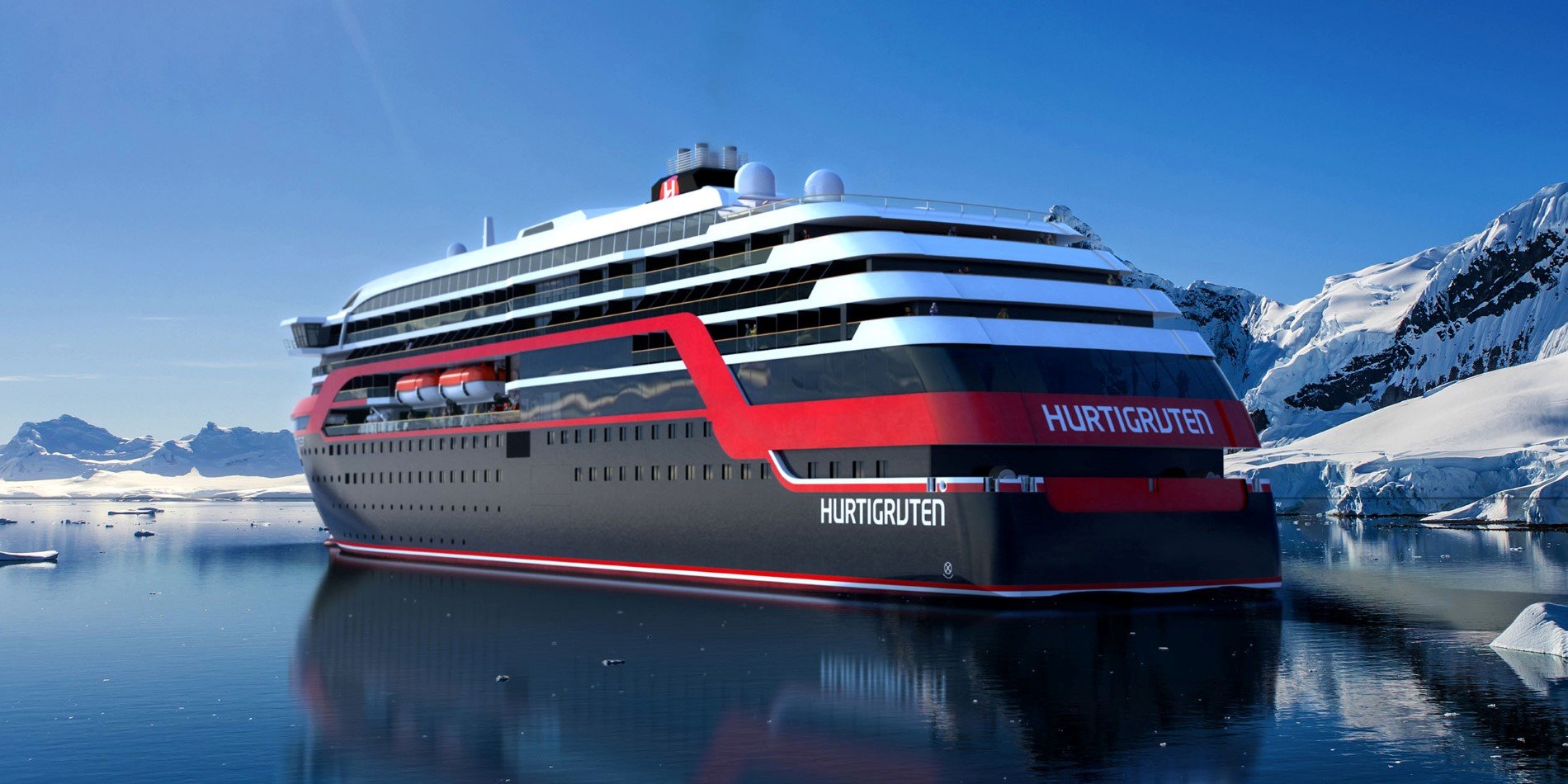Hurtigruten Builds Hybrid Ships
The Norwegian explorer cruise line, Hurtigruten, is to build new expedition ships using a new and environmentally sustainable hybrid technology. The chosen solutions will reduce the fuel consumption by approximately 20 percent. For the first time, fully electric propulsion on a passenger ship will be possible.
The decision to invest in a hybrid solution is an important milestone in Hurtigrutens goal of sailing fully electric expeditionary ships in the Arctic and Antarctic. The ships, constructed at Kleven Yards in Norway, will be the world’s first expeditionary ships with true hybrid propulsion.
The future of shipping is, without a doubt, silent and emission free. We will use our new expeditionary ships as groundbreakers for this new technology and show the world that hybrid propulsion on large ships is possible, today, says CEO of Hurtigruten, Daniel Skjeldam.
Saves 3000 tons CO2 per year
Already in the first phase, the new hybrid technology will make sailing with electric propulsion for 15-30 minutes a reality. Still, the total reduction in fuel consumption is the main gain. The technology, in combination with the construction of the hull and effective use of electricity on board, will reduce the fuel consumption and CO2-emissions from the ships with 20 percent. This amounts to more than 3000 metric tons of CO2 per year. A passenger ship requires enormous amounts of energy to operate, and so far, there have been no technologies able to fulfil the requirements of a fully electric Hurtigruten ship. Hurtigruten’s new ships will probably be the first in the world.
The hybrid solution is developed by Rolls Royce. Bellona, a non-profit organisation working to meet and fight climate challenges, have been central in the project and feel that this is a milestone event.
This is an historic day for Norwegian shipping and for Norwegian maritime technology. Battery powered propulsion in ships this size shows that batteries are on board to stay. This represents a huge reduction in emissions from shipping, and it is only the beginning, says founder and president of Bellona, Fredric Hauge.
The sound of silent fjords
The new ships, represent the largest singular investments in the history of Hurtigruten. The contract with Kleven includes the construction of two ships with a capacity of 530 beds. The contract includes an option for two more ships.
The hybrid ships are to be constructed in two phases. The first ship, which is ready in 2018, is equipped with an auxiliary electric engine, that will reduce the CO2 emissions by 20 percent. Ship number two is to be built with a fully-fledged hybrid engine that can power the entire ship for longer periods of time and distances, into fjords and most importantly in vulnerable areas.
To be able to sail using only electrical power is not only a great benefit for the environment, but it will also enhance the impact of experiencing nature for the guests. Picture sailing into a fjord silently without any form of emissions, says Skjeldam.
The investment in new technology will have a total cost of 124 million NOK. Enova, a Norwegian government enterprise responsible for promotion of environmentally friendly production and consumption of energy is contributing to the project with 45.1 million NOK.
About the hybrid technology
- Makes fully electric propulsion an option for shorter periods of time
- New battery technology contributes to a significant reduction of CO2 from ships
- New solutions will contribute to a 20 percent reduction of fuel consumption. In total, the two new ships will have a reduced CO2 emission of 6400 metric tons per year compared to traditional ships. In perspective, this is the same amount of yearly emissions created by 5540 new cars.
The technology is developed in two phases:
- Phase 1: A battery powered auxiliary engine will provide large reductions in fuel consumption related to “peakshaving”. This solution is installed on the first expeditionary ship ready in 2018.
- Phase 2: If the technology is ready, large batteries will be installed that provide the possibility of fully electric sailing across longer distances and over longer periods of time. This propulsion will be used when sailing into fjords, at port and in vulnerable areas. The goal is to install this technology in ship number 2, which is finished in 2019. The goal is also to refurbish ship number one with the same technology.
About the ships
- Specially constructed for voyages in polar waters.
- The ships are designed by Rolls Royce and are constructed by Kleven Yards.
- Number of passengers: 530
- Strengthened hulls for traversing ice
- Number of cabins: 265
- Dimensions (exterior): Length 140 meters, width 23.6 meters, height 29 meters
- Depth: 5.3 meters
- Delivery: First ship in July 2018 the second in July 2019
- Adapted for the service route along the Norwegian coast



